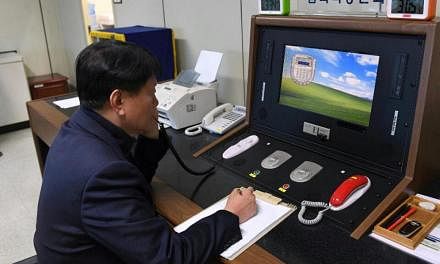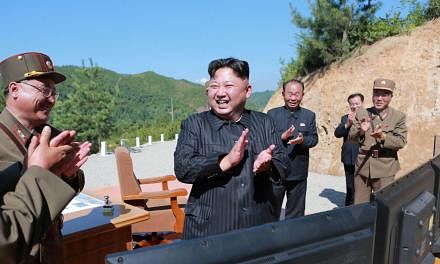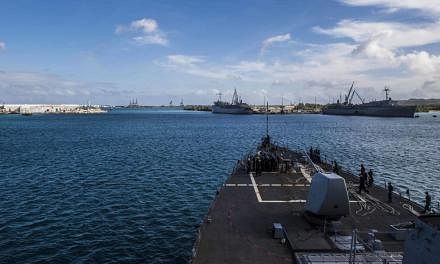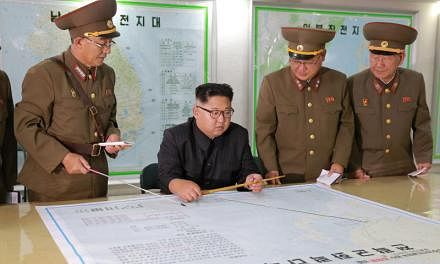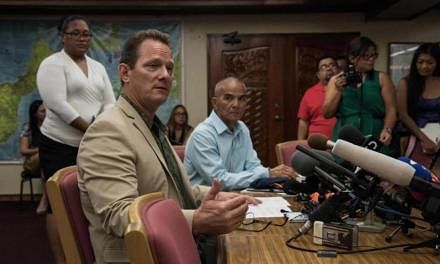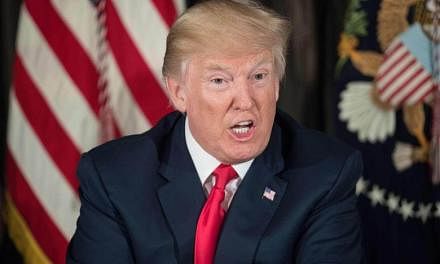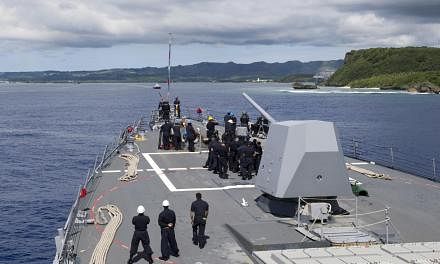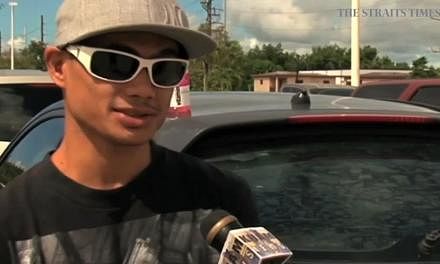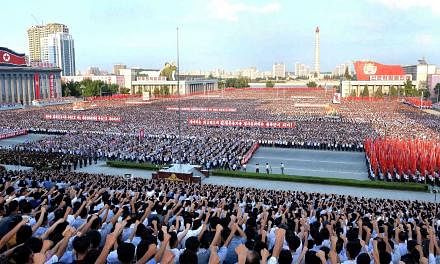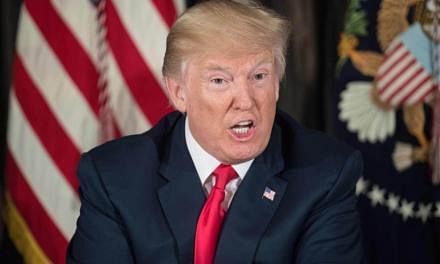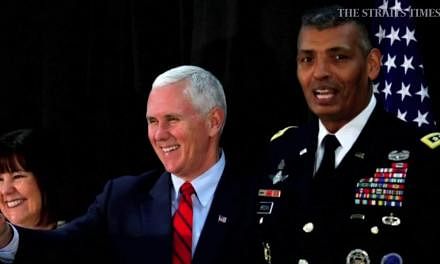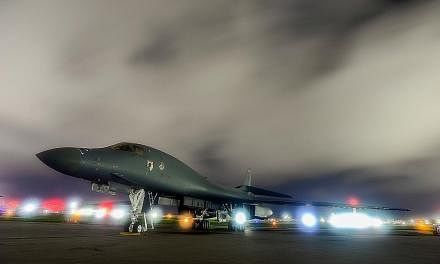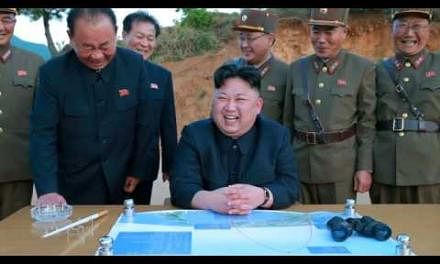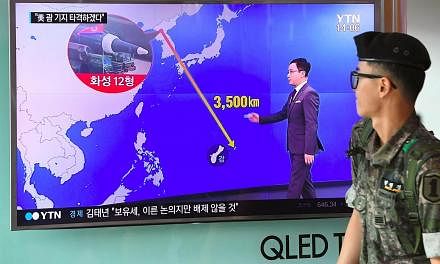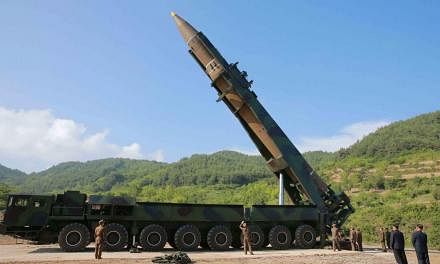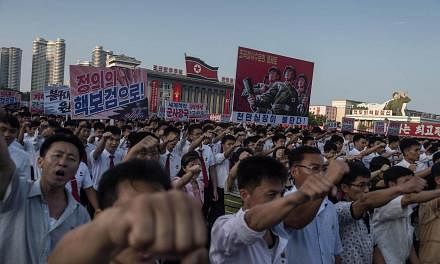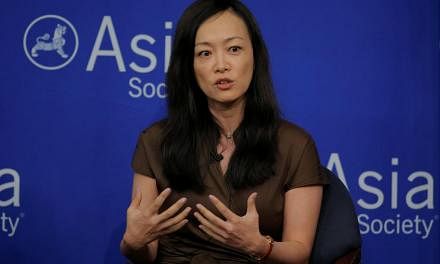WASHINGTON (WASHINGTON POST) - April 15 is the most important day on the North Korean calendar - it's the birthday of the founder of North Korea, officially known as the "Day of the Sun". This year, experts and analysts warn that North Korean leader Kim Jong Un might use the day as an excuse for a dramatic show of force.
As the world waits to see what - if anything - North Korea does, here's a look back at the country's five nuclear tests, and how the United States responded:
October 2006
Analysts determine that North Korea has conducted its first nuclear test. The first test produced an explosion of less than 1 kiloton, or the equivalent of about 1,000 tons of TNT. That is just a fraction of the size of the bombs dropped by the United States on Japan at World War II's end.
The US considered this first test a failure. Even so, American officials pushed for tough sanctions, calling for a block on all imports of military equipment to North Korea. Eventually, the United Nations passed a less strenuous measure, specifically targeted to prevent North Korea from acquiring equipment that would help them expand their nuclear program or military.
May 2009
North Korea conducted its second nuclear weapons test. The test was conducted underground. At the time, the US Geological Survey recorded a magnitude 4.7 seismic disturbance. National Intelligence Director James Clapper Jr. later estimated that the test produced an explosion of 2 kilotons.
President Barack Obama called the test a "grave threat", but military officials said this was a diplomatic, not military, matter. The United Nations imposed tighter sanctions on North Korea - now almost all arms imports were banned. They also called for intensified weapons inspections.
February 2013
Kim Jong Un, then newly in power, conducted his first nuclear test as leader. The test was far larger than earlier experiments. Experts estimate that the bomb was between 6 and 7 kilotons. The test coincided with South Korea's national elections and Obama's State of the Union.
In response, the US moved some missile defense equipment and nuclear-capable stealth bombers to South Korea. Then-Secretary of State John Kerry warned that North Korea would lose in a military showdown with the US. Kim Jong Un "needs to understand, as I think he probably does, what the outcome of the conflict would be," Kerry said.
In the wake of the test, the United Nations voted to tighten sanctions against the country. The United Nations once against moved to tighten sanctions, extending their asset freeze to individuals and organisations helping Kim. Luxury goods were put under sanctions and assets were frozen.
In reality though, by the time North Korea conducted its third test, there were few sanctions left to deploy. By 2013, North Korea's ability to import goods was severely limited. And Obama declined to take next steps, like a naval blockade to block all shipment of goods. China also continued to provide the country oil and aid.
January 2016
North Korea claimed to have conducted a fourth nuclear test, far underground. On state TV, Kim claimed that the explosion came from a miniaturised hydrogen bomb, and called it a "spectacular success". Independent observers say they can't confirm that the test happened. If it did, its size is hard to measure. But they estimate that the explosive yield was between 4 and 6 kilotons.
In the months after, Congress passed a law empowering the administration to sanction individuals who import or expert goods and money to North Korea. The United Nations passed a resolution banning North Korea from "launches using ballistic missile technology." The resolution also required all member states to "inspect cargo to/from the DPRK or brokered by the DPRK that is within or transiting their territories."
Obama and America's allies in the Pacific continued work on Thaad, a missile defense shield. The president rejected a deal, offered by the North Korean regime, to take down the shield in exchange for promises that North Korea would conduct no more nuclear tests.
September 2016
North Korea conducts a fifth nuclear test. The seismic activity generated registered a 5.3 in magnitude, and was thought to have produced an explosion of about 10 kilotons. That's equivalent to the bombs dropped on Hiroshima and Nagasaki, and 10 times stronger than what the country was able to do a decade ago.
In response, Obama worked with the United Nations to tighten sanctions even further. "The United States does not, and never will, accept North Korea as a nuclear state. Far from achieving its stated national security and economic development," he said.
"We are going to work together to make sure we're closing loopholes and make them even more effective," in a speech in South Korea. China, which has veto power over the United Nations Security Council, joined a resolutions strongly condemning the missile launch. It also agreed to ban the import of North Korean coal, a major blow to that country's economy.

